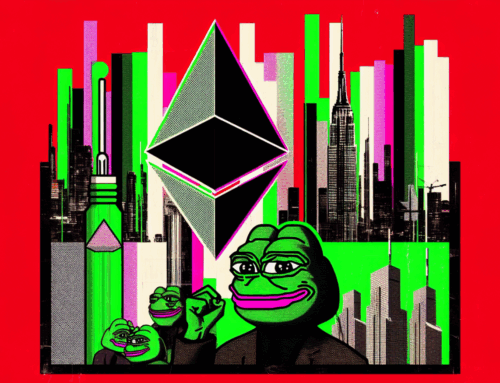The Dollar Index Is Sliding. Is Your Portfolio Prepared?
July 20, 2025
(Image credit: Getty Images)
If you’re like most investors, you have spent little or no time thinking about the U.S. dollar. Start worrying.
Lately, the dollar has been dropping sharply in value against other currencies.
The primary U.S. Dollar Index (DXY), which goes by the nickname “Dixie,” measures the U.S. currency against a basket of six others: the euro, Japanese yen, British pound, Canadian dollar, Swedish krona and Swiss franc. The euro carries by far the most weight in the basket.
Sign up for Kiplinger’s Free E-Newsletters
Profit and prosper with the best of expert advice on investing, taxes, retirement, personal finance and more – straight to your e-mail.
Profit and prosper with the best of expert advice – straight to your e-mail.
Dixie has been sliding since the beginning of 2025, falling from 109 on the index to just below 100.
But currency fluctuations aren’t unusual. In this century, the Dollar Index has bounced between 72 and 118. In 2008, the euro hit $1.57, and by 2022 it had fallen below parity with the dollar, at 98 cents. Now, one euro costs $1.13. (Prices and other data are through May 31; investments I like are in bold.)
The dollar’s fall has been especially troubling because inflation appears to be constrained and the economy over the past few years has been strong.
There are several reasons for the decline. Tariffs top the list. Normally, higher tariffs should strengthen the dollar by making foreign products less attractive. “Currency appreciation is a common impact of tariffs,” says the Tax Foundation.
But in this case, a chaotic, on-again, off-again tariff policy and ensuing court battles have caused deep uncertainty about U.S. economic policy in general, making investors shy away from the dollar.
Chaos typically favors the dollar as foreigners flee to the U.S. currency – mainly through purchases of U.S. Treasury securities – because they see the United States as a safe haven in a storm. But that’s not happening. Quite the opposite.
Why? Because the economic chaos, including the extreme volatility of the stock market, is attributed to actions of the U.S. itself.
The dollar rose in value immediately after 9/11 and during the worst of COVID. No one blamed U.S. economic decisions for those disasters. But now, the world’s investors are concerned about the trade wars that the U.S. has ignited and about something else: the federal deficit.
The dollar is sliding as the U.S. goes deeper into debt
As a percentage of gross domestic product (GDP), the deficit for 50 years starting in 1960 has generally been in the range of 2% to 3%. Lately, the norm has become around 5%.
The financial firm Alliance Bernstein is now projecting 7% for the next 10 years, with interest on the debt exceeding $1 trillion annually.
Investors who may have been hopeful that a Republican administration would set the U.S. on a more stable fiscal course are now concerned about U.S. instability – especially in the wake of a May downgrade of Treasury bonds by Moody’s, the ratings agency. The dollar is bearing the brunt of those concerns.
The euro and yen have been rising against the dollar, and so has that rock of stability, the Swiss franc.
Alphabet (GOOGL) and Pfizer (PFE) this year have sold bonds denominated in euros, valued at almost $100 billion. Kenneth Rogoff, the Harvard economist, argues in his new book, Our Dollar, Your Problem, that the U.S. currency’s lofty status is on the wane.
What does the dollar’s decline mean for investors?
What does all this mean for investors who believe that the dollar’s decline is not transitory?
First, understand that when the dollar falls, businesses that have a high proportion of sales abroad benefit as their revenues in euros or yen are converted back to dollars.
For that reason, I like U.S. companies that have significant exposure to international sales – especially firms that sell services that are unlikely to be badly hurt, if at all, by trade wars that focus tariffs on goods instead.
A good example is Netflix (NFLX). Some 59% of its sales are abroad, according to a Goldman Sachs analysis.
Bookings Holdings(BKNG), which owns Priceline and OpenTable, among other services, collects 89% of its revenues abroad. For Mastercard (MA), the figure is 70%; for Las Vegas Sands (LVS), which operates casino resorts in Macao and Singapore, it’s 100%.
A few months ago, I recommended European stocks, arguing that the continent has been “shaken out of its lethargy.”
So far this year, the iShares Europe ETF (IEV), a popular exchange-traded fund, has returned 22%, compared with just 1.1% for the S&P 500.
If President Trump socks Europe with big tariffs, as he has threatened, European companies that trade with the U.S. will be in jeopardy, but more domestic-focused firms will be spared.
Even more than the ETF, which includes large multinationals that will suffer from tariffs, I like European banks, including Italy’s UniCredit (UNCRY)and Raiffeisen Bank International (RAIFY), based in Vienna, which has risen 59% since the start of the year but still trades at an absurdly low price-to-earnings (P/E) ratio of 6.
Another good choice is UBS Group (UBS), the Zurich-based bank with a strong wealth-management component. Shares have tripled in the past five years, and the valuation is higher than it is for other European banks.
In this environment, look for anything Swiss. Other attractive choices are Zurich Insurance Group (ZURVY) and Swisscom (SCMWY), a telecom company with the largest fiber-optic network in the country. In both cases, shares have been rising smartly as the dollar has dropped.
While Europe has a resilient currency and can weather a tariff storm, I am not so sanguine about Asia, where nearly every country is deeply connected with China, the main target of U.S. economic animosity today.
Brazil, which ranks among the top 10 countries in gross domestic product, offers an enticing alternative. Again, to avoid tariff risk, stick with companies whose markets lean domestic or regional and that sell services. Brazil’s currency, the real, has risen in value lately, and inflation is modest (5.5%) by the continent’s standards.
One of Brazil’s best prospects is 82-year-old Banco Bradesco (BBD), with an array of banking and insurance products. It has risen 56% this year, but the valuation remains low.
Two Brazilian small caps offer intriguing, though riskier, alternatives. The first is StoneCo (STNE), which provides payment technology to the nation’s businesses.
The second is Cogna Educacao (COGNY), which offers private education services, online and on campus, from kindergarten through university. Both stocks have been on a tear.
What about trading currencies themselves? With its heavy leverage and dangerously sharp moves, currency trading is for professionals only. Nor do I advocate investing in bitcoin or gold as an antidote to a weakening dollar.
Enthusiasts may prove correct, but I agree with Warren Buffett that bitcoin is a “gambling token” and prefer to invest in the imaginative power of human beings running good businesses.
The dollar is used in 50% of global transactions, and it will likely retain its position as the world’s reserve currency. But as the U.S. reputation for rule of law and economic stability falls, so will the dollar.
Professor Rogoff is persuasive when he says that the U.S. currency “is about to get knocked down a couple pegs.” Wise investors will want to use part of their portfolio to hedge against this unpleasant prospect.
James K. Glassman chairs Glassman Advisory, a public-affairs consulting firm. He does not write about his clients. His most recent book is Safety Net: The Strategy for De-Risking Your Investments in a Time of Turbulence. He owns none of the securities mentioned here. You can reach him at JKGlassman@gmail.com.
Note: This item first appeared in Kiplinger Personal Finance Magazine, a monthly, trustworthy source of advice and guidance. Subscribe to help you make more money and keep more of the money you make here.
Related content
Get Kiplinger Today newsletter — free
Profit and prosper with the best of Kiplinger’s advice on investing, taxes, retirement, personal finance and much more. Delivered daily. Enter your email in the box and click Sign Me Up.
Search
RECENT PRESS RELEASES
Paradigm resolves block production bug in Reth Ethereum client
SWI Editorial Staff2025-09-03T07:14:35-07:00September 3, 2025|
Etherealize secures $40 million to bring Ethereum to Wall Street
SWI Editorial Staff2025-09-03T07:14:15-07:00September 3, 2025|
Ondo debuts over 100 tokenized US stocks and ETFs on Ethereum, with BNB Chain and Solana s
SWI Editorial Staff2025-09-03T07:13:51-07:00September 3, 2025|
Ondo Finance Launches Tokenized US Stocks on Ethereum
SWI Editorial Staff2025-09-03T07:09:30-07:00September 3, 2025|
Bit Digital: It’s Too Early To Tell Ethereum Shift Gains, Hold (NASDAQ:BTBT)
SWI Editorial Staff2025-09-03T07:08:54-07:00September 3, 2025|
Cannabis Market Update August 2025 – The Cannabis Industry is on the Move
SWI Editorial Staff2025-09-02T12:47:07-07:00September 2, 2025|
Related Post


